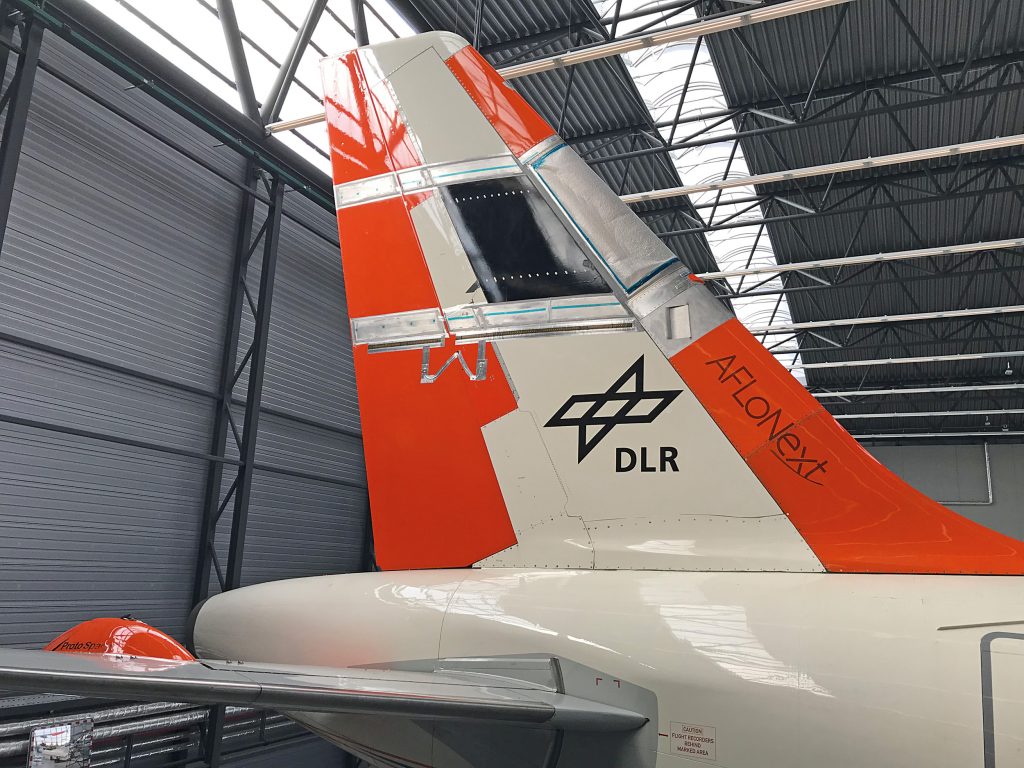DLR A320 Advanced Technology Research Aircraft prepared for AFLoNext flight test campaign
Hybrid Laminar Flow Control (HLFC) is one of the key technologies for signifcantly reducing fuel burn (up to nine percent fuel savings for long-range aircraft) and emissions. The basic idea behind HLFC is the application of a very small amount of boundary layer suction through a micro-perforated skin to stabilise the laminar boundary layer. The surface region with applied suction is followed by a region that further stabilises the boundary layer by means of a tailored surface shape. These combined measures extend the laminar boundary layer – and hence the region of low friction drag – signifcantly downstream until the transition from a laminar into a turbulent boundary layer that generates higher skin friction drag occurs.
Within the European project AFLoNext (Active Flow Loads and Noise control on next generation wing), an innovative HLFC system has been designed, manufactured and qualifed for flight testing. The system has been installed on the DLR A320 Advanced Technology Research Aircraft (ATRA) on the middle segment of the vertical stabiliser (fn). Suction is generated by either a passive or an active system, consisting of an actuator adjusted flap or a four-stage compressor respectively. Infrared cameras installed in the tailplane (horizontal stabiliser) allow the detection of transition locations; pressure distributions are recorded at two cross sections of the fn, hotflm arrays are used to monitor the boundary layer status of the attachment line, and the highly instrumented HLFC leading edge allows a clear verifcation of the functionality. Advanced in-flight data processing technologies enable highly effcient flight testing.
German Aerospace Center (DLR)
Heiko Freiherr Geyr von Schweppenburg · E-Mail: heiko.vgeyr@dlr.de · DLR.de
